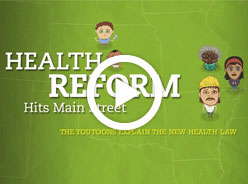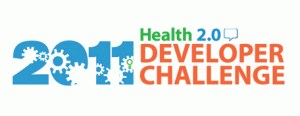Posts Tagged ‘Child Health Issues’
Child Welfare in California: A Snapshot of Legislation
April is Child Abuse Prevention Month, and we’ve just updated child abuse and foster care data on kidsdata.org — seems like the perfect time to check in on recently passed and upcoming child welfare legislation.
We’ve noted a few key bills below, and you can find more child welfare legislation passed into law in this report from the County Welfare Directors Association. And, if you know of other bills, please note them here.
Child Welfare Legislation Passed in 2010:
- AB 12, introduced by Assemblymember Jim Beall (D-San Jose), is the California Fostering Connections to Success Act, which extends foster care to age 21 if the youth is working or enrolled in school full time.
- AB 743, authored by Assemblymember Anthony Portantino (D-La Canada Flintridge), strengthens state policy to keep siblings together in the foster care system.
- AB 1933 from Assemblymember Julia Brownley (D-Santa Monica) allows foster children to remain in their school of origin, even if placed with a family in a different area.
- AB 2322, authored by Assemblymember Mike Feuer (D-Los Angeles), helps county employees better identify instances of child abuse and neglect, helps social workers fashion plans of action for potentially abused children, and provides strict protection for the privacy of children and their families.
Proposed Child Welfare Legislation for 2011:
- AB 73, from Assemblymember Feuer, would provide for public access to dependency court proceedings.
- AB 181, authored by Assemblymember Portantino, would create a mental health bill of rights for foster youth.
- AB 194, from Assemblymember Beall, would offer priority enrollment for foster youth in post-secondary education.
Posted by kidsdata.org
Tags: Child Health Issues, New Data
Health Care Reform: One Year Later
 |
This video about health reform was created by the Kaiser Family Foundation. |
This week marks the one-year anniversary of the signing of the federal Affordable Care Act. While some key provisions are not yet in place, children and families already have been affected by the new law, especially children with special health care needs.
In California, 8% of children with special needs are uninsured, and among those who are insured, 35% of have inadequate coverage, according to 2007 data. These children may be uninsured because they are denied coverage on the open market – health insurers tend to reject children with pre-existing conditions, such as asthma, diabetes, and autism, due to higher costs of care for these children. However, since the signing of the Affordable Care Act, approximately 576,500 California children with pre-existing conditions are now protected, according to Families USA; under the new law, insurers no longer can deny health coverage to these children.
Some other health reform provisions affecting children and families already have been implemented as well, including:
- Parents now can keep children on their health insurance policies until age 26. This helps reduce the rate of uninsurance among older teens and young adults.
- Insurers cannot charge co-payments, deductibles, or co-insurance for certain preventive care, thereby reducing families’ out-of-pocket expenses.
- Insurance companies cannot drop coverage for people who are sick.
- There are no longer lifetime limits on coverage.
See what other changes lie ahead under the Affordable Care Act with this timeline.
Posted by Jordan Handcox
Tags: Child Health Issues
At Health 2.0, Data + Technology = Problem Solving
 It’s amazing what can be accomplished in one day when great minds come together to find new ways to address health issues.
It’s amazing what can be accomplished in one day when great minds come together to find new ways to address health issues.
About a week ago, kidsdata.org participated in a code-a-thon sponsored by Health 2.0 and the U.S. Department of Health and Human Services. For those who don’t know, a code-a-thon is essentially a hack-fest — a bunch of coders come together, divide into teams and spend one day building websites, apps, and other technology to tackle problems.
This time around, all the problems focused on health, and about 100 developers turned out. By the end of the day, we saw novel approaches to some serious health issues, including: motivating people to exercise or eat right, developing useful school health records for kids with special needs, and taking advantage of free services available through health reform. A short summary of all the projects developed is available in this blog post on applicationsforgood.org, but here’s a snapshot of one that particularly interested us:
One team from Capito Life Technologies came up with an approach for tracking health records at school for children with special health care needs, and then using those records to keep parents and doctors informed of a child’s condition. Using data from kidsdata.org, the team determined that asthma is one of the most common conditions facing this population of children. (42% of kids with special needs in California have asthma.) And, asthma is a condition that affects a large population of children in California — about 15% — and often must be treated during the school day.
The coders developed an online school health records system, so that all of a student’s health information could be stored in one place. The system also would include information about what medications the student is taking, and the prescribed dosages. If a student visited the nurse’s office due to an asthma attack, for example, a nurse could use the online system to record the student’s condition, and note any medication that was given, as well as the outcome. The system would then send a text message to that student’s parent to keep them up to date on their child’s condition. All the information in the system would be secure and password-protected, and also available for download for a physician or parent.
Amazingly, the team built that entire system in about 7 hours at the code-a-thon.
Maybe it was the inspirational surroundings (the event was held at the Google campus) or maybe it was the competitive spirit among the developers, but everyone at the event was passionate about improving health through technology. And, as you can see, real solutions were created.
Posted by Felicity Simmons
Tags: Child Health Issues, Data Challenges
A Closer Look at the Growth in Autism Diagnoses
A few years ago, we published an issue brief, “Autism Diagnoses on the Rise,” that explored the steep climb in autism diagnoses across California. So what does the trend look like these days? About the same, it turns out. Newly released data from the California Department of Education show that the growth in special education students diagnosed with autism continues unabated, from roughly 17,500 California public school students in 2002 to nearly 60,000 in 2010.
As you dig deeper, however, some other trends emerge. First, while students with autism comprise a greater share of all special education students in California compared to roughly a decade ago (from about 3% of all special education students in ’02 to about 9% in ’10), numbers are on the rise for another diagnosis, too — “other health impairment.” The California Department of Education defines this as “having limited strength, vitality or alertness, due to chronic or acute health problems, such as a heart condition, tuberculosis, rheumatic fever, nephritis, asthma, sickle cell anemia, hemophilia, epilepsy, lead poisoning, leukemia, or diabetes.” Meanwhile, the percent of special education students diagnosed with a learning disability has dropped considerably, from 52% of all special education students in 2002 to 42% in 2010.
This Google animation, which uses data from kidsdata.org indicators, shows the relative growth/decrease in special education enrollments by the three conditions noted above. First click on the bar graph icon in the top-right, then press play in the bottom left.
We encourage our readers to provide some perspective on these trends. We do know that research shows that federal and state finance reform may be contributing to declining learning disability rates in California (and across the nation). As for autism, the Centers for Disease Control and Prevention says that whether the increases are “attributable to a true increase in the risk for developing ASD [autism spectrum disorders] symptoms or solely to changes in community awareness and identification patterns is not known.” Comments from users like you can help us illuminate what’s going on both locally and statewide, and provide broader perspective on the growth in autism diagnoses.
Posted by Andy Krackov
Tags: Child Health Issues, CSHCN, New Data
Act Fast to Enroll in Affordable Health Insurance for Your Child
California Insurance Commissioner Dave Jones and other state officials are urging families to take advantage of a new state law and sign up their children for private health insurance plans before open enrollment ends March 1. Under the new law, insurers must offer child-only policies despite pre-existing conditions, and can not charge more than twice the standard rate for children who have prior conditions.
For more details, see this article in the LA Times, or visit the website of the California Insurance Commissioner.
In California, about 6% of children ages 0-17 were uninsured in 2007. The children perhaps most affected by the preexisting condition clause are children with special health care needs — about 15% of the state’s child population. Some of these children have complex conditions, many of which include functional limitations requiring constant care. And about 35% of children with special health care needs have parents who say their insurance coverage is not adequate.
We encourage you to spread the word about this open enrollment period for child health insurance, so that all families, especially those with a special needs child, can take advantage of affordable options.
Posted by kidsdata.org
Tags: Child Health Issues
January News Roundup Features Articles About Homelessness and Parenting, Smoking Around Kids, and More
The January issue of the Kidsdata News Roundup now is available – you can read it here.
A few highlights:
Homelessness
Article Chronicles Impact of Homelessness on Parenting
(SF Chronicle, 1/4/11, by Gurley)
Low Birthweight
More Tiny Newborns Survive, but Often Face an Array of Health Problems as They Grow Up, Study Finds
(Reuters, 12/28/10, by Peeples)
Sexual Health
Study Finds More Than 10% of ‘Abstinent’ Teens Test Positive for STDs, and Urges More Screenings for All Teens
(Washington Times, 1/3/11, by Wetzstein)
Sleep
Kids Who Don’t Sleep Enough Are at Greater Risk for Depression and Anxiety Later in Life, Studies Show
(Wall Street Journal, 1/18/11, by Petersen)
Smoking
Kindergarten-Age Kids with Parents Who Smoke Have Higher Blood Pressure, Study Finds
(LA Times, 1/14/11, by Brown)
Posted by Jordan Handcox
Tags: Child Health Issues
Find Children’s Data Related to Governor’s Budget Proposal
 California Gov. Jerry Brown proposed his 2011-12 budget this week, which includes many cuts aimed at reducing the state’s deficit. Here’s a round-up of resources that explain the details of the budget’s impact on programs for children, along with links to related data on kidsdata.org. Know of other resources? Share them in the comments field below.
California Gov. Jerry Brown proposed his 2011-12 budget this week, which includes many cuts aimed at reducing the state’s deficit. Here’s a round-up of resources that explain the details of the budget’s impact on programs for children, along with links to related data on kidsdata.org. Know of other resources? Share them in the comments field below.
- This release from the California Budget Project offers specific breakdowns of cuts to child programs, including foster care (see data) and child care (see data). The release also notes cuts to the CalWORKs program. Kidsdata.org includes data on several measures of poverty, including child poverty, family income, and enrollment in the free/reduced price school lunch program.
- This article on HealthyCal.org outlines proposed cuts to the state’s health insurance programs, including Healthy Families. See data about health care for children in your area>>
- The Sacramento Bee published a summary of key points from the state budget proposal. The summary notes cuts to the state’s 21 regional centers that provide services to developmentally disabled Californians. See data about children with developmental disabilities and other special health care needs>>
- The California Department of Finance breaks out budget proposals by category. Here, you can view specific changes to budgets for K-12 education, health and human services, and realignment of some state programs to the county level. This realignment includes some juvenile justice programs. See data on juvenile arrests for your region>>
- The Los Angeles Times has created an interactive budget balancer tool. Try your hand at balancing the budget. Here’s a summary of all the newpaper’s budget coverage>>
- Read the full budget summary >>
Posted by kidsdata.org
Tags: Child Health Issues
Sac Bee Editorial Says Kids Not on Candidates’ Radar Screen
An editorial in today’s Sacramento Bee laments that the two candidates for governor are not talking more about issues affecting kids in California. “Neither [candidate] has anything resembling an agenda for children, and what they do have to say is vastly unsatisfying,” says the editorial, also noting our foundation’s interest in encouraging a dialogue on issues related to children’s health and well being.
The editorial enumerates a range of issues that the candidates could comment on, citing data. For those interested in how children are faring on the measures highlighted by the Sacramento Bee’s editorial, here are links to currently available data:
Posted by Andy Krackov
Tags: Child Health Issues
California Data Sheds Light on Bullying of Gay Youth
October is National Bullying Prevention Month, and a recent bullying-related suicide by a New Jersey college student is a tragic reminder of how devastating bullying can be.
Several recent bullying victims making national headlines were children and young adults bullied due to their sexual orientation. In fact, there has been so much outcry that a YouTube campaign has started to support the victims.
Kidsdata.org offers data on this subject.
Kidsdata.org has student-reported data from the California Healthy Kids Survey noting how many times students in 7th, 9th and 11th grades, and in non-traditional programs, report being bullied due to their sexual orientation. These data are available for counties and school districts across California, and also are broken out by race/ethnicity and level of connectedness to school.
According to the 06-08 data, more than 5 percent of 7th-grade boys in California reported being bullied four times or more in the past year because they were gay or because someone thought they were gay; 2.5 percent of 7th-grade girls said the same. Overall, 10 percent of 7th-grade girls and 12 percent of boys report being bullied at least once in the past year due to sexual orientation.
We also offer data about bullying reports for other reasons. Bullying and Harassment due to:
Posted by Felicity Simmons
Tags: Child Health Issues
Health Care Reform for Kids Begins Now
 |
This video about health reform from the Kaiser Family Foundation notes changes coming now and in the future. |
Several key aspects of national health care reform will take effect this week – including two important provisions for kids.
- Insurance companies no longer will be able to deny coverage to children with pre-existing conditions.
- Parents can keep children on their health insurance policies until age 26.
In addition, several other reforms will be implemented this week that will surely help families.
A few highlights:
- Insurers will not be able to charge co-payments, deductibles or co-insurance for certain preventive care.
- Insurance companies cannot drop coverage for people who are sick.
- There will no longer be lifetime limits on coverage.
For more information and explanation about health reform laws, visit http://www.healthcare.gov.
Also, the Kaiser Family Foundation has created a comprehensive and easy-to-use online tool that, among other features, offers timeline noting when each aspect of reform begins. http://healthreform.kff.org/
Posted by Felicity Simmons
Tags: Child Health Issues


